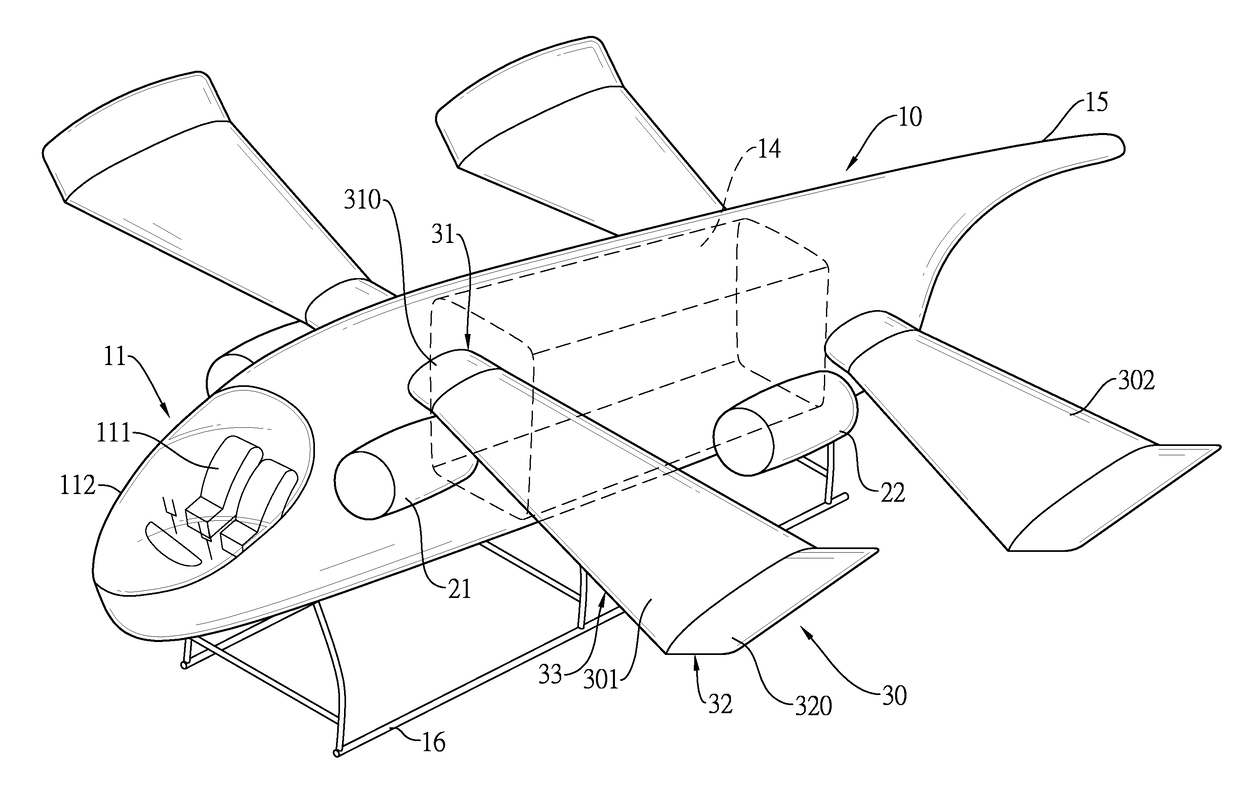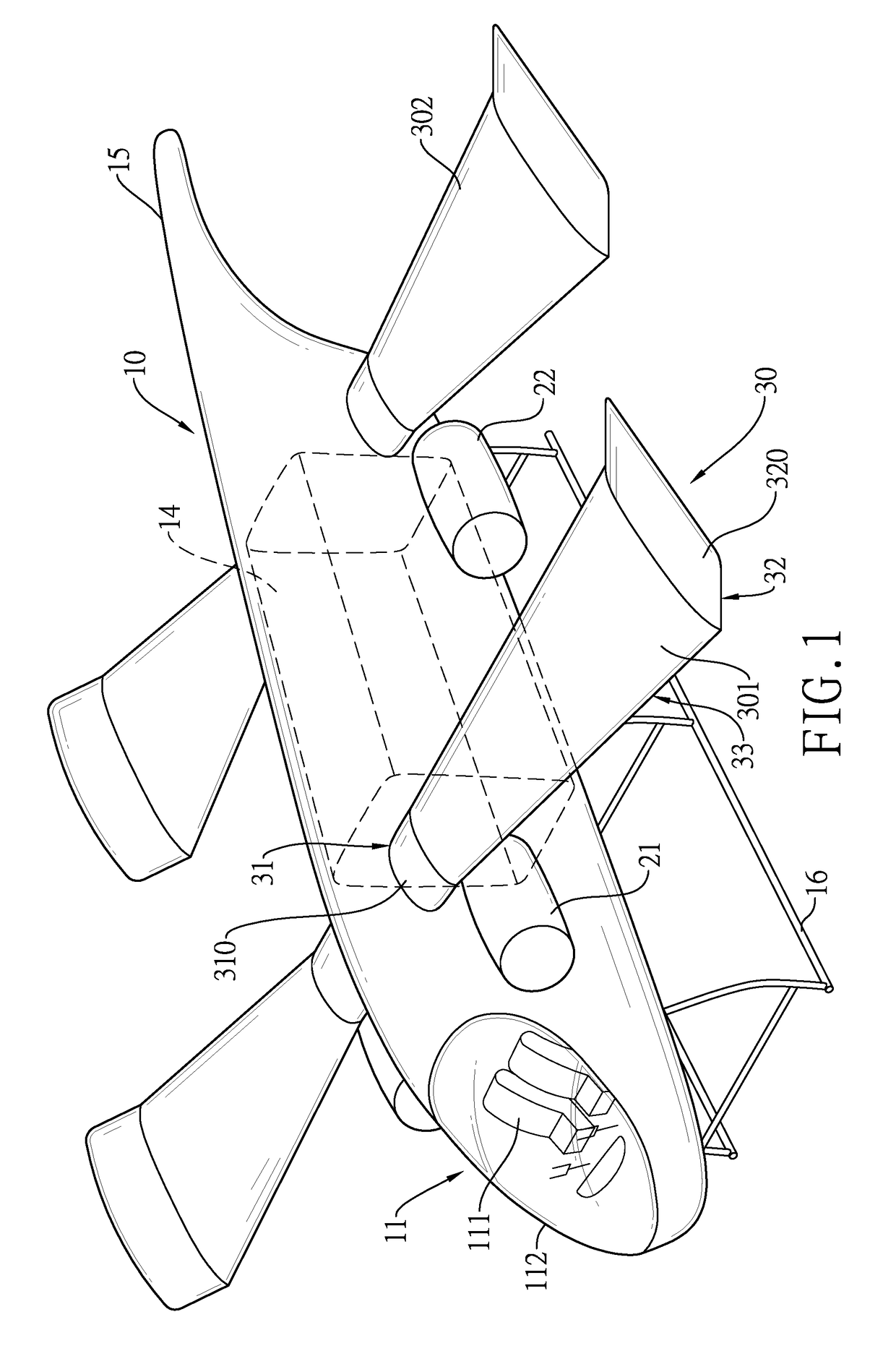Vtol aircraft with wings
a technology of vtol aircraft and wings, which is applied in the direction of wing shape, vertical landing/take-off aircraft, wing adjustment, etc., can solve the problems of few matured models encountering a lot of accidents, machines are broken, and the vtol airplane cannot perform some important maneuvers, etc., to save energy, save weight, and land safely
- Summary
- Abstract
- Description
- Claims
- Application Information
AI Technical Summary
Benefits of technology
Problems solved by technology
Method used
Image
Examples
Embodiment Construction
[0030]Please refer to FIGS. 1 to 4. A vertical taking-off and landing (hereinafter referred to as VTOL) aircraft comprises a fuselage 10, a plurality of pairs of thrust units, and at least one pair of wings.
[0031]In a first embodiment, the fuselage 10 of the VTOL aircraft comprises a pilot cabin 11, a passage 12, two transmission chambers 13, a payload cabin 14, a tail rod 15, and a landing truss 16. The fuselage 10 has a length direction.
[0032]The pilot cabin 11 is located at a front end of the fuselage 10 and comprises two abreast seats 111 and a window 112. The two abreast seats 111 are juxtaposed and mounted in the pilot cabin 11. The window 112 is in front of the abreast seats 111 and extends to two sides of the two abreast seats 111. In other words, rear edges of the window 112 are behind pilots, which causes pilots' view angle θ in the pilot cabin 11 to be over 180 or 270 degrees horizontally as shown in FIG. 4.
[0033]The passage 12 is spaced apart from the abreast seats 11 an...
PUM
 Login to View More
Login to View More Abstract
Description
Claims
Application Information
 Login to View More
Login to View More - R&D
- Intellectual Property
- Life Sciences
- Materials
- Tech Scout
- Unparalleled Data Quality
- Higher Quality Content
- 60% Fewer Hallucinations
Browse by: Latest US Patents, China's latest patents, Technical Efficacy Thesaurus, Application Domain, Technology Topic, Popular Technical Reports.
© 2025 PatSnap. All rights reserved.Legal|Privacy policy|Modern Slavery Act Transparency Statement|Sitemap|About US| Contact US: help@patsnap.com



